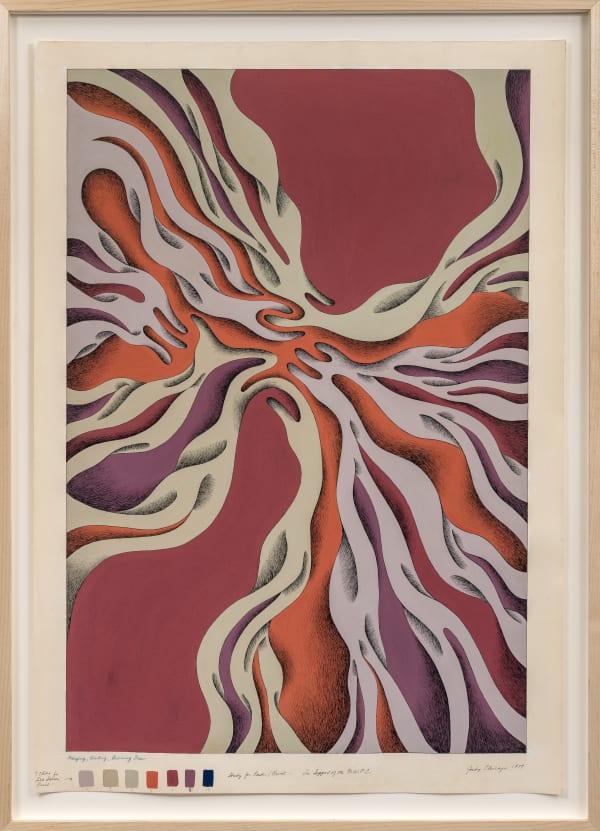"Even if I am simply one more woman laying one more brick in the foundation of a new and more humane world, it is enough to make me rise eagerly from my bed each morning and face the challenge of breaking the historic silence that has held women captive for so long."
In the early 1970s, Judy Chicago turned her attention to fusing the language of Abstraction with a new-found resolve to openly articulate her experiences as a woman. This fusion is vividly felt in her late 1970s works, where softly contoured forms expand and contract across the surface, creating a sense of internal movement that resists fixity. Their sway evokes bodily curves, natural cycles, and sensual flows, yet stops short of direct figuration, allowing Abstraction to remain a site of multiplicity and potential.
Judy Chicago’s groundbreaking career spans over six decades and embraces a wide range of media, including painting, sculpture, installation, drawing, and needlework. A pioneer of feminist art, Chicago studied at UCLA before co-founding the first feminist art programme in the United States at California State University, Fresno. Chicago gained international recognition with her monumental installation ‘The Dinner Party (1974–79)’, now permanently housed at the Brooklyn Museum. Throughout her practice, she has persistently challenged the male-dominated art historical canon, exploring themes of gender, power, birth, and social justice. Chicago's art is represented in numerous prestigious collections, including the Brooklyn Museum (New York), the Tate (London), the Getty Research Institute (Los Angeles), the Art Institute of Chicago, the Hammer Museum (Los Angeles), LACMA, and the National Gallery of Australia (Canberra).


